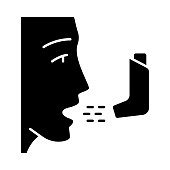Asthma Inhaler Procedures

Asthma inhalers are a lifesaver to many or if not all asthma sufferers. Asthma inhalers provides a safety net for people with asthma and is used whenever an asthma attack is about to happen.The most common asthma inhaler is a canister that deliver asthma medication. A metered-dose inhaler (MDI) is a device that delivers a specific amount of medication to the lungs, in the form of a short burst of aerosolized medicine that is inhaled by the patient. It is the most commonly used delivery system for treating asthma,chronic obstructive pulmonary disease (COPD) and other respiratory diseases. The medication in a metered dose inhaler is most commonly a bronchodilator, corticosteroid or a combination of both for the treatment of asthma and COPD. A metered-dose inhaler (MDI) Asthma inhaler has been used for nearly a hundred years and has improved a lot in recent years to deliver greater absorption and potency. The basic principle is still the same although the medication has chang...

